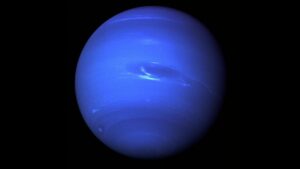Planet Uranus Discovered in 1781

On March 13th 1781, astronomer William Herschel discovered the seventh planet from the sun- Uranus. He discovered Uranus while looking at the sky through a telescope that he made himself. When he first spotted the bright planet, he mistook it for a comet. He soon discovered that the object was a planet orbiting the sun.
Initially, Herschel wanted to name the planet Georgium Sidus after the British ruler, King George III. However, people outside of Britain were against this idea. To adhere to the tradition of naming planets after mythological deities, Uranus was named after the Greek god of the sky. However, Uranus was the only planet that was named after a Greek god, not a Roman god.
King George III knighted William Herschel and appointed him as the court astronomer. In 1787, Herschel discovered Uranus’ two largest moons- Titania and Oberon.
Studying Uranus has been challenging for researchers due to its distance from Earth. However, NASA was able to send Voyager 2 in 1986, making it the only spacecraft to study Uranus. Uranus did not remain the farthest object in the solar system for a very long time. In 1846, the eighth planet was discovered and named Neptune. In 1930, Pluto was discovered, but it lost its planetary status in 2006.

